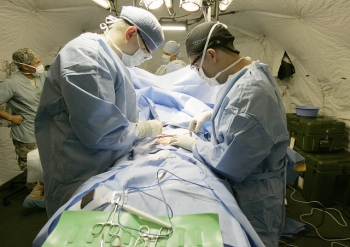All about Deviated Septum Surgery

Do you find that you are unable to breathe through your nostrils and often face respiratory infections? Then you must consult the right plastic surgeon in Manhattan. According to the American Society of Plastic Surgery, one of the most common causes of breathing impairment is a deviated septum. And sometimes, a deviated septum could result in sinus infection. Along with infection, a deviated septum may cause nasal congestion (sometimes one sided), frequent sinus infections, facial pain, headaches, postnasal drip, noisy breathing during sleep in both infants and young children, and frequent nosebleeds.
Don’t panic, this can be treated with surgery—the conventional operation is called submucous resection of the septum. Although, deviated septum surgery can correct breathing problems, sinus infection and nosebleeds, it also has few complications. In this article, we’re going to discuss the complications and postoperative care of deviated septum surgery in Manhattan. Have a look:
Postoperative Care
- After surgery, keep the splint dry.
- Gently clean dried blood from the inside of the nose with a Q-tip and dilute hydrogen peroxide.
- For two weeks, refrain from blowing your nose or sneezing if possible.
- If a sneeze is inevitable, sneeze through your mouth to avoid pressure in your nose.
- Sleep with your head and chest elevated so that your nose is above your heart. The best situation would be resting in a reclining chair. If you don’t have a recliner, use three or four pillows while in bed. Also during the day, sit upright as much as possible. These steps will minimize the swelling.
- To increase air moisturizer, use a humidifier. And also, use Vaseline outside the nostrils.
- If you want to promote a good surgical result and faster healing, avoid smoking and alcohol.
These are just a few important postoperative care tips: your plastic surgeon will list out few more after the surgery.
Complications
Complications can be avoided, if you follow the preoperative care. Without adequate preoperative and intraoperative assessment of the deviated nose, an incomplete correction of the nasal deformity and function is inevitable. Inadequate straightening in turns contributes to the recurrent or continued nasal deformity.
- Hemorrhage – You will observe bleeding after few days. The bleeding may be primary or secondary. Secondary hemorrhage may occur after 5-6 days and could be due to infection.
- Flapping septum – Excessive removal of the septal structure results in a weak septum which yields to inspiratory negative pressure in the nose. This may lead to nasal obstruction.
- Depression of the cartilaginous dorsum may occur.
- Adhesions may develop between the septum and turbinate because of the trauma at the time of surgery.
To avoid these complications, it is advised to ask as much questions as you can to the plastic surgeon and know whether the treatment will give successful results.
